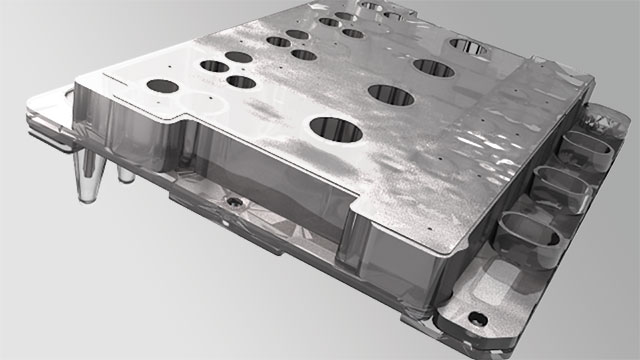How Microfluidic Technology for Implementing and Building Assays Works
Problem: Laboratories in the U.S. and abroad face obstacles such as limited budgets and are
constrained by inefficient workflow and a lack of qualified personnel and highly specialized
technicians to fill a growing number of professional laboratory positions.

The U.S. Bureau of Labor Statistics reports that the number of medical laboratory technologist and technician positions is expected to increase to more than 373,500 by 2020, an increase of 13 percent from 2010. Many positions remain unfilled, as over half of all laboratories are reporting difficulty hiring laboratory personnel. This issue is compounded by an aging workforce. According to the American Society for Clinical Pathology (ASCP), the national average age of the laboratory workforce in 2010 was 49.2, compared with 43.6 just four years prior. The ASCP also reports a decrease in the number of laboratory training programs by almost 25 percent from 1990 to 2010 and a decline in the number of individuals graduating from these programs.
To overcome these obstacles, laboratories need equipment that can accommodate the demand for more sophisticated laboratory tests, technology that is capable of high throughput and high complexity, and processes that improve workflow efficiencies with minimal user intervention.
Solution: Microfluidics enables the adoption of advanced molecular technology by laboratories of all types, from small community hospital labs to highly complex, centralized laboratories. When fully automated and enclosed within a device, microfluidics can eliminate the potential for contamination, reduce user error and streamline workflow, thus helping smaller laboratories complete more tests with increased accuracy.
The Rheonix CARD® (Chemistry and Reagent Device) cartridge uses microfluidics to perform assays on the company’s Encompass MDx® and Encompass Optimum™ workstations, making it simpler and easier to perform molecular analyses at a fraction of the cost of other options.
The dual-layer design of the microfluidic technology when interfaced with its workstation automatically manipulates reagents internally with its active fluidic network of pumps, valves and channels. The upper surface contains reservoirs that hold reagents used in the extraction, purification, amplification, and detection processes, and any resulting liquid waste. The channels and pumps located on the lower surface of the microfluidic device are used to transport and mix reagents and move waste into the reservoirs formed in the top surface of the device. By actively pumping fluids from reservoir to reservoir within the CARD cartridge, molecular analyses are automated. The design will facilitate implementation of molecular analyses across a wide range of markets, including next-generation sequencing sample preparation, research-use-only testing, food and beverage industry applications, and in vitro diagnostics.
The workstations allow laboratories to quickly, easily and cost-effectively run several samples through fully integrated and automated nucleic acid amplification analyses, from raw sample input through detection, with no user intervention. Each CARD cartridge allows for simultaneous analysis of four different samples and can handle a broad range of sample types, such as fresh tissue, urine, whole blood, serum, saliva, swabs, and formalin-fixed, paraffin-embedded (FFPE) tissue. The cartridge also performs multiple molecular techniques, including sample preparation, such as chemical and enzymatic lysis and DNA purification; amplification, such as endpoint polymerase chain reaction (PCR), reverse transcriptase PCR and quantitative PCR; and detection on a low-density microarray or lateral flow strip.
While other systems have traditionally emphasized either multiplexing or throughput, the single-use CARD cartridges do both and can perform sophisticated functions with a simple design. This lowers laboratory costs by eliminating waste in time, equipment and consumables, and reduces the amount of highly skilled labor.
For more information on Rheonix, visit www.rheonix.com.
